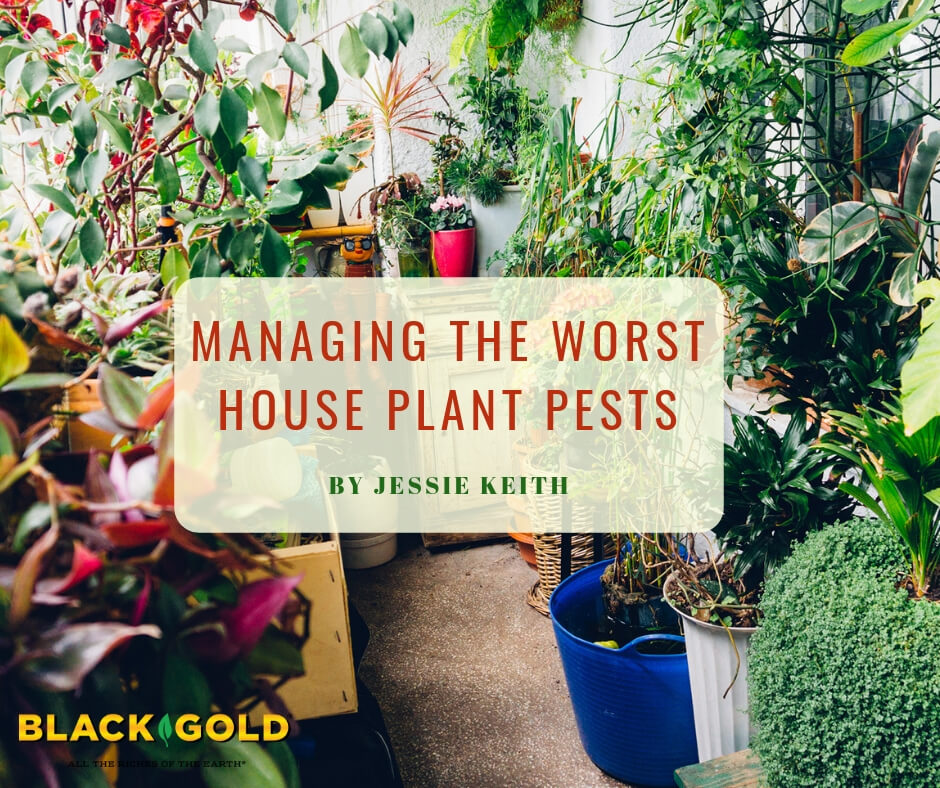
When garden plants are outdoors, pest populations are generally lower or more diffuse due to natural predators, harsher weather, and more host plants. But, once you bring plants indoors, all of that changes. Predators are gone, climate conditions are good, and the pests that enter your home have just a few plants to feed on. This means hungry pest populations will explode on your house plants, causing damage and wreckage along the way.
It is essential to start an integrated pest management (IPM) program as soon as pests are spotted. But, each pest and its management is different. Here we detail some of the worst house plant pests and how to tackle them indoors.
Aphids
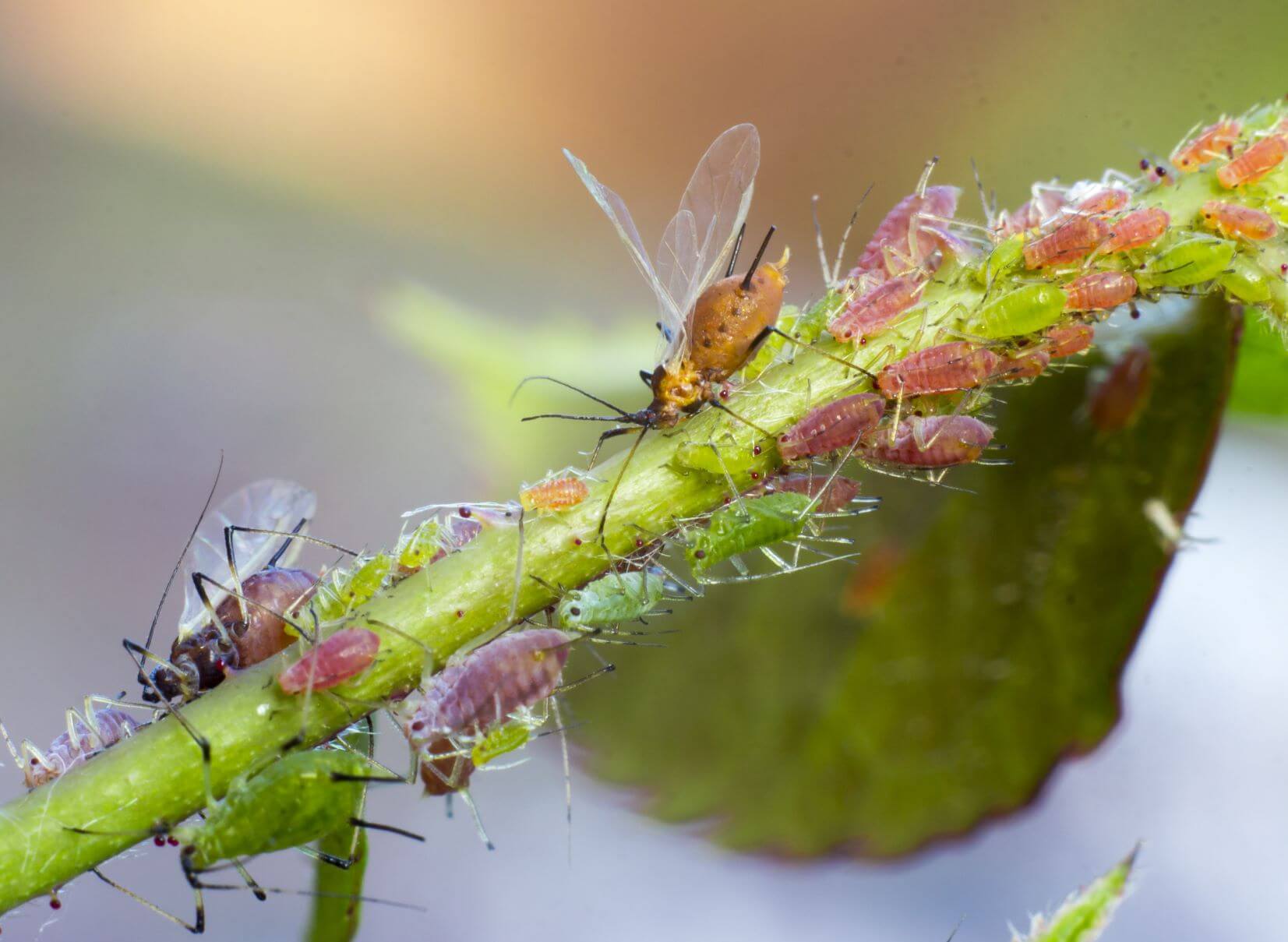
Aphids fly in from the outdoors or enter on infested house plants. They suck the juices from tender stems and leaves, leaving a trail of sticky honeydew that sometimes attracts ants. (Click here to learn how to manage unwanted ants in gardens.) Thankfully, they are easy to manage. Simply wash and wipe aphids away from leaves and stems with a warm, moist cloth, and then spray any remaining aphids off with tap water. Let plants dry, and then spray again with an OMRI Listed insecticidal soap. Check your pot’s topsoil to make sure any wayward aphids are not hanging out in wait to reinfest plants. Continue these practices, and your aphid problems will be gone in no time.
Fungus Gnats

Fungus gnats can fly into homes or enter via infested plants or open potting mix bags. They breed on moist soils and their larvae damage roots and spread plant diseases. Truly they are everywhere soil, algae, fungus, and plant material can be found. Once indoors, populations explode because most gardeners don’t understand how to stop them or how they enter the home. But, don’t despair! Follow the simple cultural guidelines in this video (click here to watch) to easily stop fungus gnats from breeding in your house plants.
White Flies
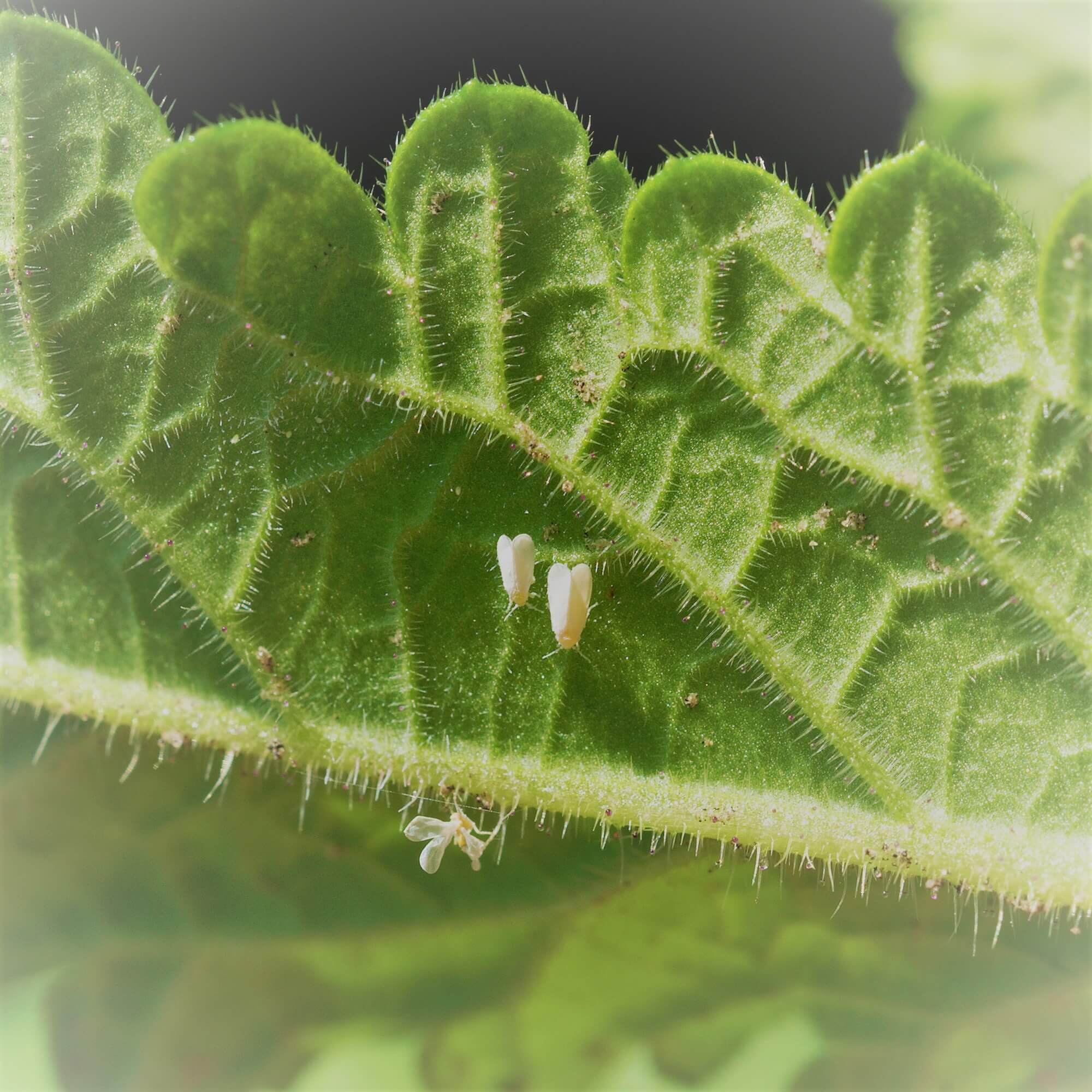
Whiteflies are sucking insects that remove the juices from leaves and stems. They can cause terrible damage to plants, leading to leaf drop and general decline. Without management, the undersides of leaves will become covered with clouds of tiny white flies and clusters of their small, round, white egg masses.
If you have an infestation, remove the worst of the white-fly-covered leaves, especially those with lots of egg masses, and bag them for trash disposal. Then spray, wash, and wipe the remaining stems and leaves thoroughly. Make sure no more egg masses remain. Finally, spray the plants with insecticidal soap or Neem oil. (Click here for an overview of horticultural oils for organic insect control.) Continue to check for whiteflies and wipe and spray leaves as needed.
Spider Mites
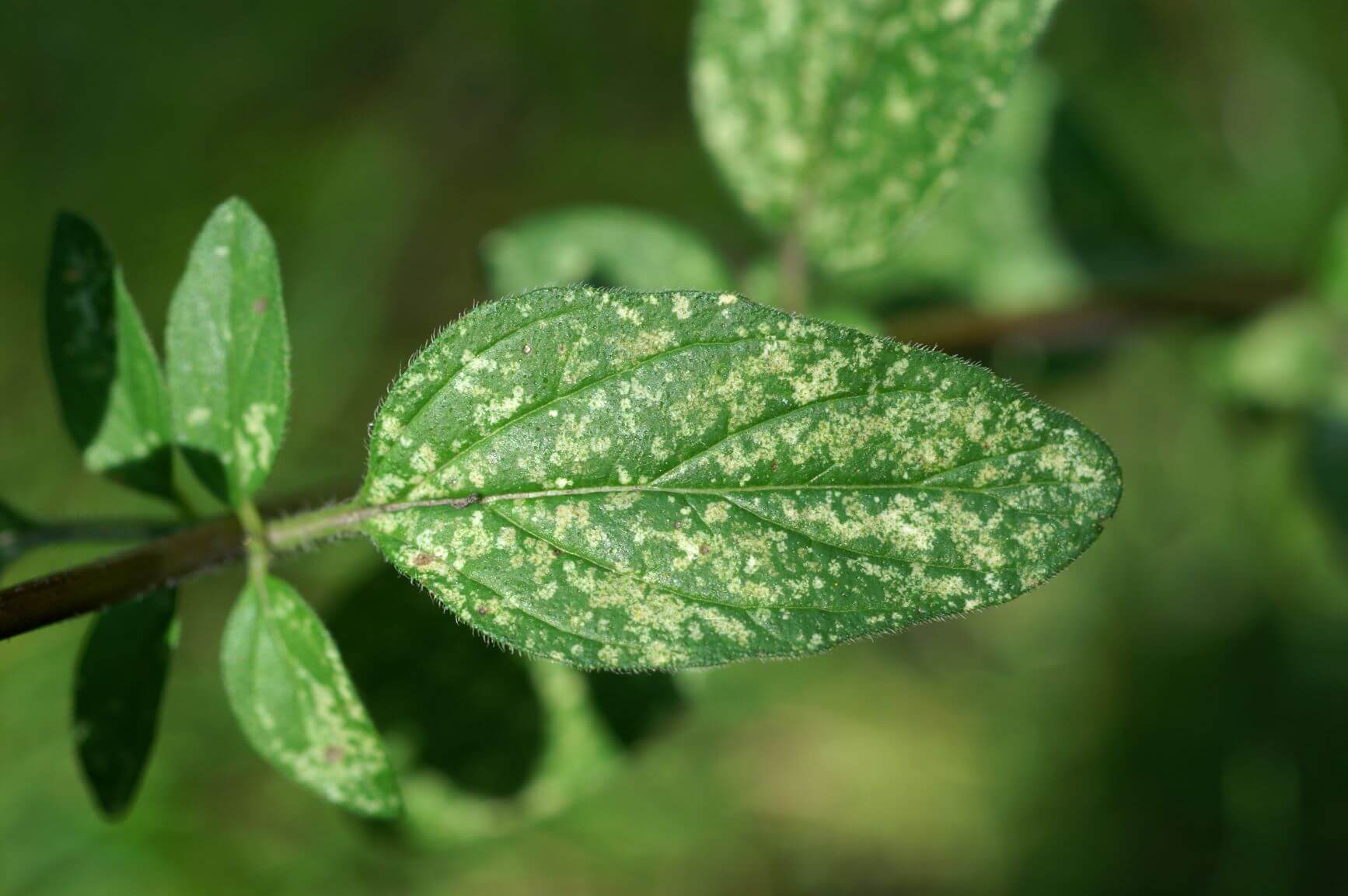
These are tiny plant pests, and once you notice their damage, they are numerous and have already become a large problem. You will notice the damage when the tops of leaves look like they have little white spots across them. These are dead leaf cells that the mites have sucked dry. You might also see little webs on the leaves and tender stems of infected plants.
To see if you have mites, take a clean piece of white paper, hold it beneath the leaves, then tap the leaves onto the paper. If you have mites, lots of tiny specs will fall, and eventually, they will start crawling around. These are spider mites!
As with aphids and whiteflies, always clean plants before treating them. Remove the worst of the damaged leaves. Then spray, wash, and wipe the remaining stems and leaves thoroughly. Remove the top inch of potting soil and replace it with fresh. (We recommend using Black Gold All Purpose Potting Mix.) It also helps to wipe the container down, in case any mites have strayed. Finally, spray the plants with insecticidal soap or Neem oil. Continue to do the tap test and wipe and spray leaves as needed. In time you will overcome your spider mite problem.
Mealybugs
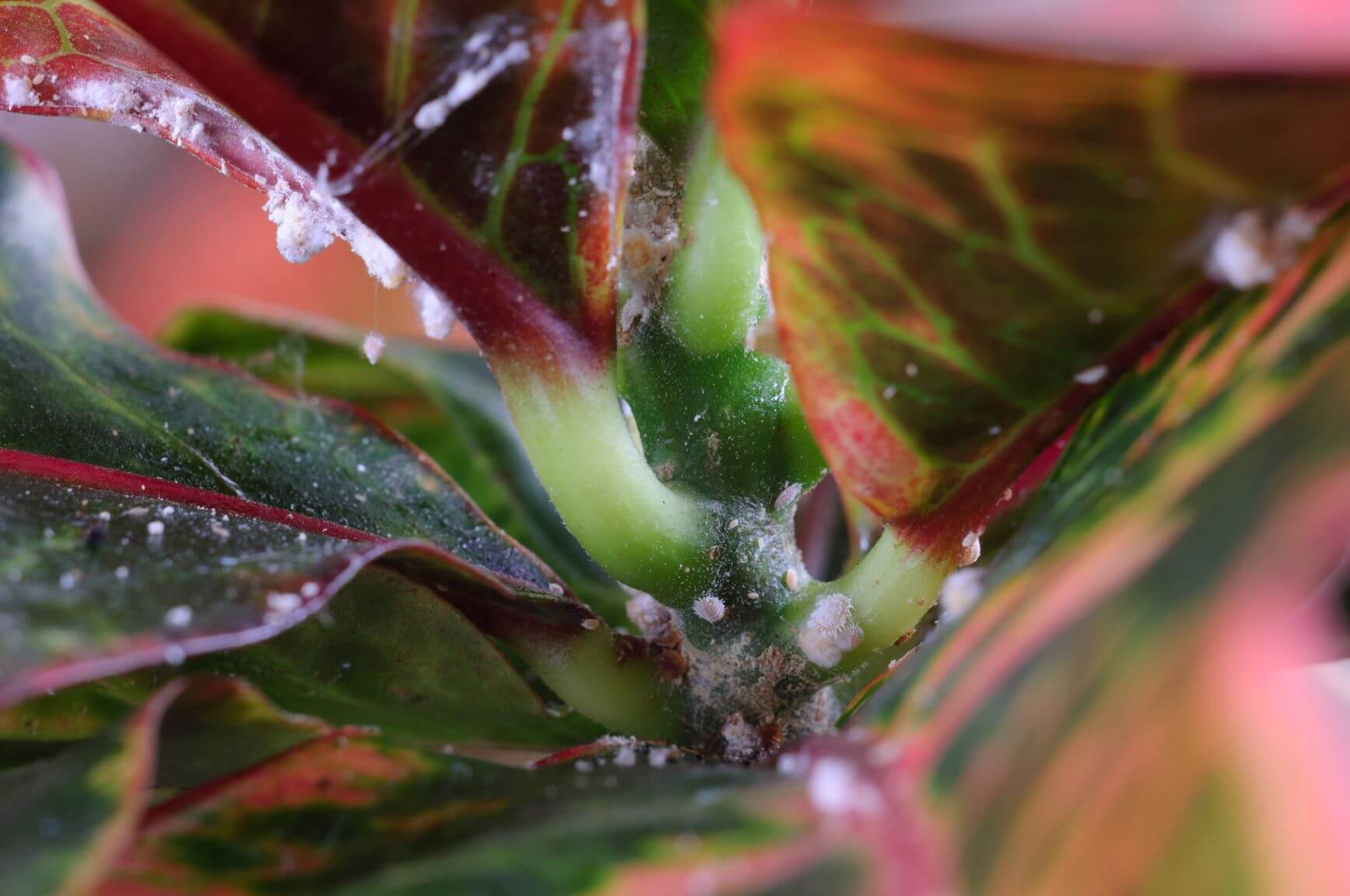
Mealybug infestations are hard to manage because these pests travel and spread as crawlers. Crawlers are the nearly invisible nymphs that hatch from the pest’s egg masses and “crawl” several feet to quickly infest other plants. You can’t always see these crawlers, so to manage them, you have to clean plants, containers, and surrounding surfaces when you see an infestation.
Mealybugs are soft, white, and feed on the juices of plant leaves and stems, particularly in the crevices between leaves and stems. They produce copious crawlers, so the sooner you notice mealybugs, the better.
To remove mealybugs, start by cleaning your plant, its pot, and all surfaces surrounding the plant. Remove the top two inches of potting soil and replace it with fresh. Finally, spray the plants. One of the best mealybug sprays is a 10-25% solution of isopropyl alcohol. Fill a spray bottle with 1/4 cup of isopropyl alcohol and 2/4 cup water and shake to combine. When treating plants with this solution, keep them out of direct sunlight because it can cause leaf burn in the bright sun. You can also treat plants with insecticidal soap or Neem oil. Repeat spray treatments until plants are mealybug-free.
Another method to stop crawlers is to loop stems surrounding infected areas with double-sided tape traps. As the crawlers hatch and begin crawling, they will get stuck on the tape and die. You can also surround pot edges with double-sided tape to keep crawlers from moving beyond an infected plant.
Armored Scale
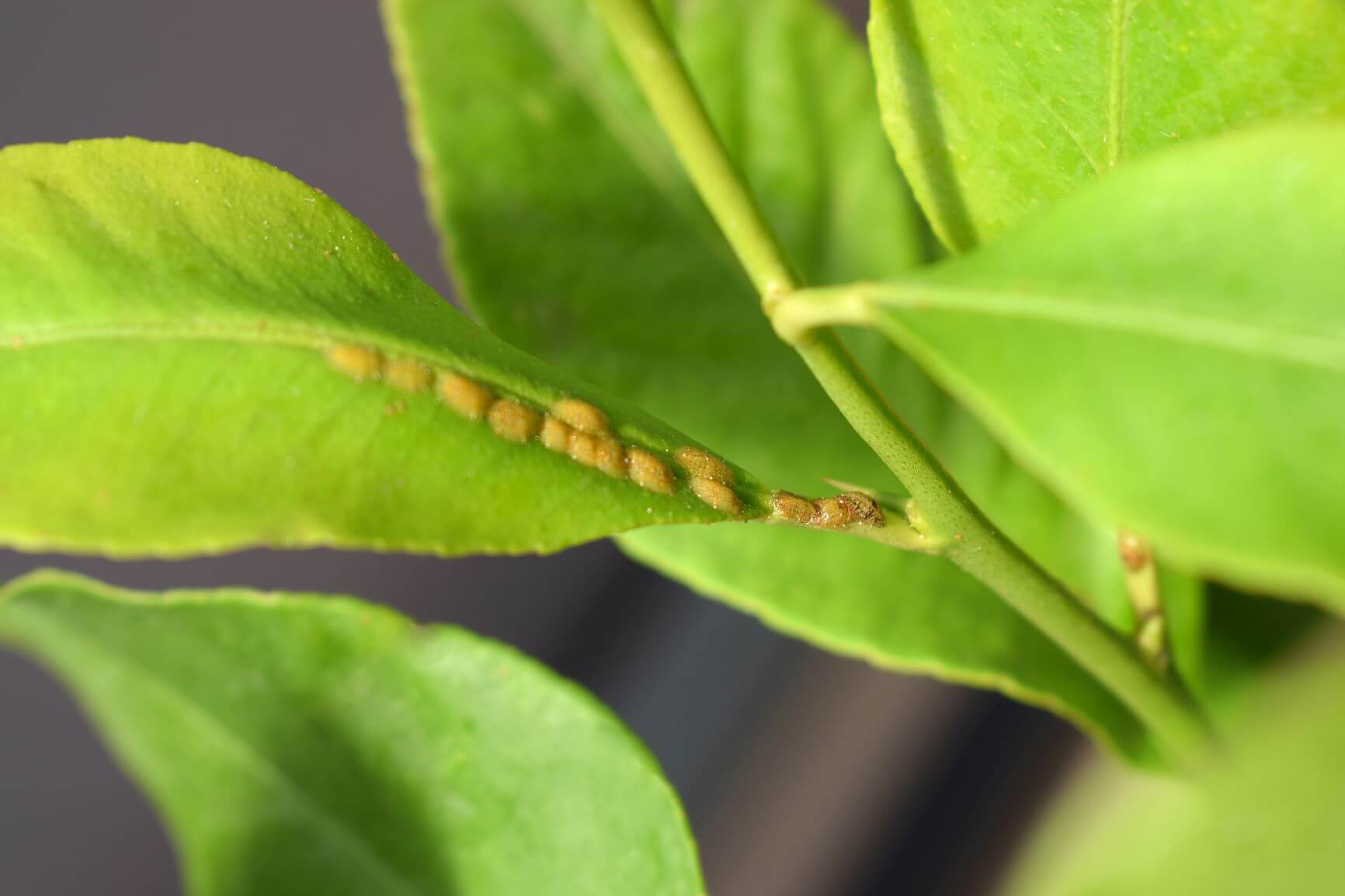
Armored scale is tough, a pain to remove, and many different species attack many different plants. Like mealybugs, they are sucking insects that produce crawlers. Their chief damage is the removal of water and nutrients from stems and leaves, which will slow growth and cause general decline. Severe infestations can even kill a plant.
Armored scale insects have tough, plate-like coverings to protect the insects underneath. Most have several generations a year when plants are actively growing. Simply washing or spraying these tough, slow-moving pests won’t do a lot of damage. What helps is to scrape or pick them off, without doing damage to stems. Badly infected stems should be completely cut off. Then wash plants down with insecticidal soap.
It also helps to spray plants with dormant oil spray in late winter or early spring, and then again in early summer, when crawlers are most active. Double-sided tape traps should also be applied, as suggested with mealybugs. Monitor your plants regularly to stay on top of any scale infestation and repeat management steps as needed.
Monitoring Pests with Sticky Traps
Flying indoor plant pests are attracted to yellow sticky traps, which can be purchased at most garden centers. Placing them around house plants is a great way to determine pest types and population numbers in the home. They also capture flying adults. It’s just one more way to stay on top of difficult house plant pests.

